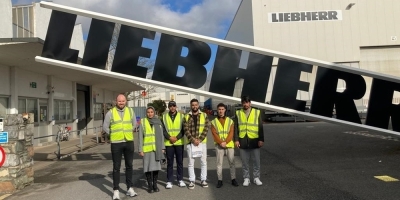
- ELECTRICAL PAPER LOCAD CINEMATOGRAPHY SOFTWARE
- ELECTRICAL PAPER LOCAD CINEMATOGRAPHY CODE
- ELECTRICAL PAPER LOCAD CINEMATOGRAPHY FREE
Emax MT2213-935KV motors were chosen as each motor can produce a maximum of 935kV, generating an excess of lift when paired with 10" propellers.
ELECTRICAL PAPER LOCAD CINEMATOGRAPHY SOFTWARE
Because this software was chosen to fly the quadcopter, typical components were chosen to simplify the prototyping process.
ELECTRICAL PAPER LOCAD CINEMATOGRAPHY CODE
This Arduino is paired with the MultiWii drone software which allows the user to input the components chosen into the code and make adjustments. Because of this, an Arduino Uno R3 was chosen as it is open source based and minimalistic.


This eliminates the expensive costs of prototyping and allows the user to customize the quadcopter to add additional payloads.
ELECTRICAL PAPER LOCAD CINEMATOGRAPHY FREE
This platform allows the user to manipulate or change features on the frame while using software that is completely open source and free to the public. Using common quadcopter components and open-source options, this solution allows the common user to build off this existing platform to create the quadcopter to fit their needs.

The current market options for a quadcopter that supports a 4K resolution camera are limited and expensive. The quadcopter also contains features to make it weather resistant in order to increase its longevity. This 3D printed frame and open-source components makes the cost of this project minimal while maintaining a reliable and customizable platform. This platform is based on previous open-source hardware to control the software and electronics of the quadcopter, and the frame is designed using the open-source software FreeCAD to make a 3D printed frame. Appropriate positioning and selection of lighting equipment to improve the image quality is discussed.The goal of this project is to create an open-source quadcopter platform that is able to capture 4K resolution pictures and videos. Photographic lighting techniques designed to enhance the data quality are relatively simple and seldom used. By establishing the wattage per square foot demand based on maximum intensity values, the appropriate electrical services may be determined and distribution equipment properly selected. The calculation of power factors based on the efficiency of continuous duty tungsten halogen lighting equipment require an understanding of the efficiencies of this equipment. Because power services have to be rated for maximum utilization of lighting loads,electrical feeds must be sized for the maximum lighting load. Comfort and safety is a prime consideration in the selection and placement of equipment. Bio mechanics cinematography laboratories, by their nature require effective light levels, versatility in equipment selection and positioning, and intensity control by both mechanical and electrical means.


 0 kommentar(er)
0 kommentar(er)
